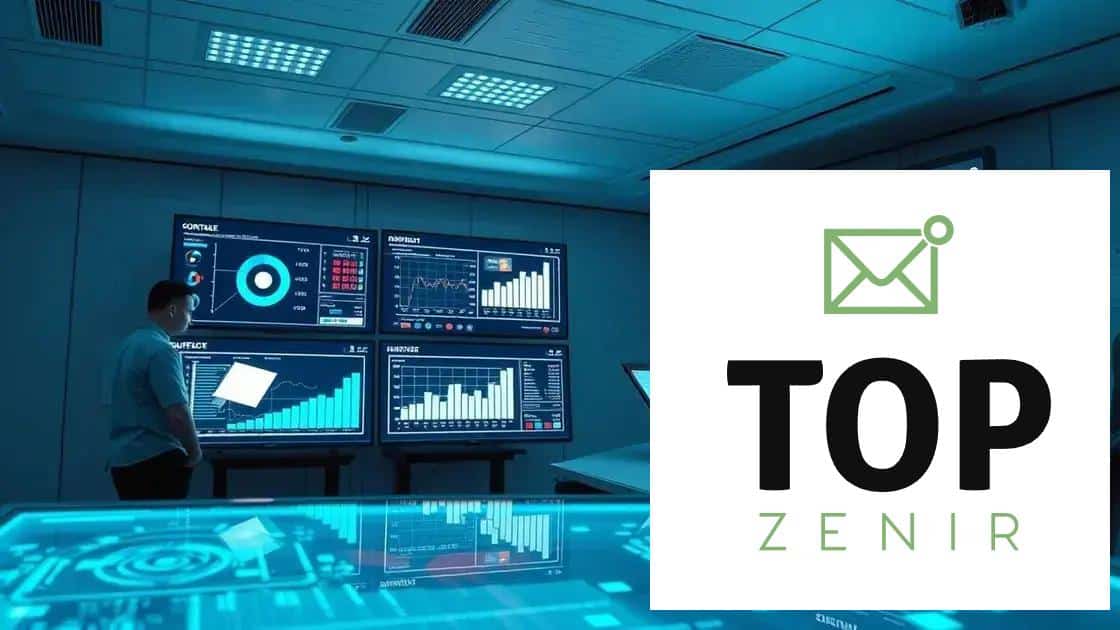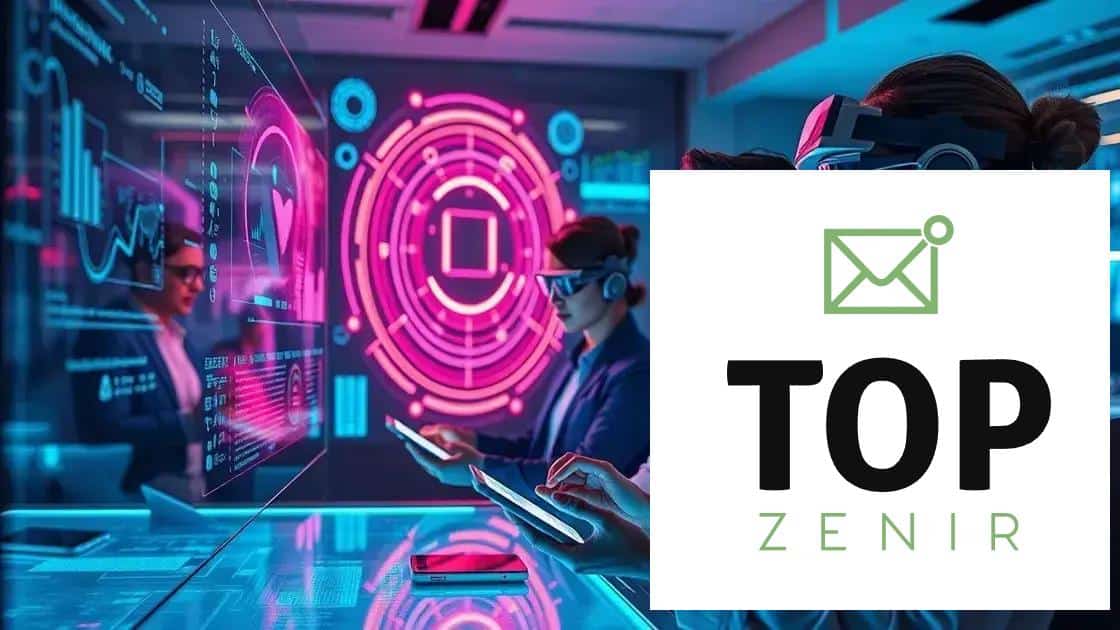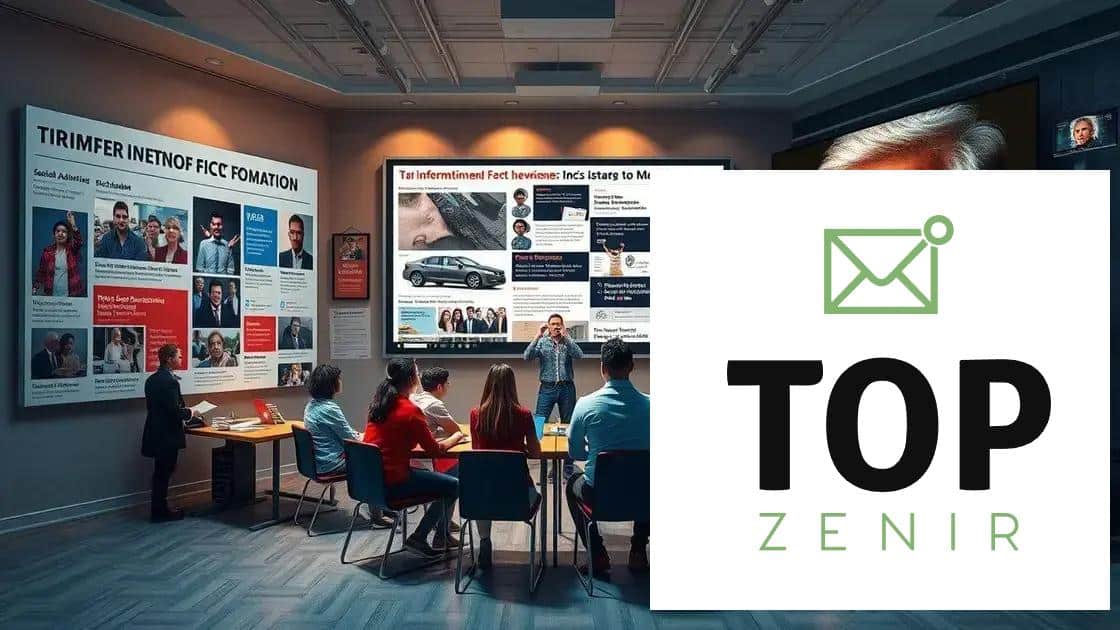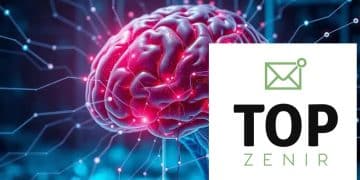Anti-disinformation tech advances for 2025 elections

Anti-disinformation tech advances for the 2025 elections involve innovative tools and strategies, including AI monitoring, community engagement, and enhanced media literacy to ensure electoral integrity and combat misinformation effectively.
Anti-disinformation tech advances for 2025 elections are shaping the way we approach electoral integrity. As misinformation proliferates, understanding these technological innovations becomes vital. Curious about what’s underway? Let’s dive in.
Current landscape of disinformation
The current landscape of disinformation is rapidly evolving, especially as we approach the 2025 elections. With the rise of technology and social media, it has become easier for false information to spread. Understanding this environment is crucial for combating misinformation.
Understanding Disinformation
Disinformation is intentional false information spread to mislead the public. Unlike misinformation, which can be unintentional, disinformation aims to achieve specific goals. Recent studies show that a substantial portion of online content is disinformation, affecting public perception.
Key Factors Contributing to Disinformation
- Widespread social media usage
- Algorithm-driven content promotion
- Lack of media literacy among users
- Political and financial motivations
As misinformation campaigns become more sophisticated, we see an increase in tactics that target emotional responses. Misinformation often exploits fears and biases, making it even harder to counteract. It leads to polarized views and can distract from genuine issues that need attention.
Identifying the sources of disinformation is essential. Many of these sources operate anonymously or with fake identities to evade accountability. Tracking these sources requires sophisticated tools and constant vigilance from both users and authorities.
The Role of Technology
Technology plays a double-edged role in this battle. While it can spread disinformation, it also provides tools to identify and combat false narratives. Machine learning algorithms can analyze patterns and detect anomalies in data. Initiatives are underway to improve these technologies as part of a proactive strategy against misinformation.
Educational programs are also essential in enhancing public awareness. By teaching people how to verify the information they encounter, we can empower them to become critical consumers of content. Initiatives aimed at building media literacy are gaining traction globally.
As the 2025 elections approach, it’s vital to understand the current landscape of disinformation. Awareness and proactive measures are key to safeguarding the democratic process while fostering informed citizenry.
Breakthrough technologies on the horizon

Exciting developments in breakthrough technologies are on the horizon, which can significantly impact how we tackle disinformation. As we prepare for the 2025 elections, these innovations could shape the landscape of information integrity.
AI and Machine Learning Innovations
One of the most promising areas is the use of artificial intelligence (AI) and machine learning. These technologies help analyze patterns in data, enabling the detection of false narratives quickly. They learn from large datasets to identify suspicious content, making it easier to flag misinformation before it spreads.
Emerging Tools for Fact-Checking
- Automated fact-checking platforms
- Real-time misinformation detection tools
- Browser extensions for content verification
- AI-driven reporting systems
Moreover, new tools for fact-checking are emerging, which provide users with instant verification of information. This helps citizens differentiate between credible news and misleading content. Such tools cultivate a more informed public and reinforce trust in legitimate sources.
Blockchain technology is also making strides. By providing a transparent way to verify the authenticity of information, blockchain can help track the sources of news articles. This ensures that information is traceable, giving users confidence in their news consumption.
Collaborative Platforms for Community Engagement
Innovations are not limited to technology alone. New collaborative platforms encourage the public to report disinformation. This collective effort helps in identifying trends and patterns that may not be visible to individual users. Engaging the community plays a crucial role in combating misinformation.
As these breakthrough technologies develop, they offer a glimmer of hope in the fight against disinformation. Awareness and adoption of these tools will be essential in creating a more reliable informational ecosystem.
Key stakeholders in anti-disinformation
The fight against disinformation involves many players, each playing a crucial role. Understanding the key stakeholders in anti-disinformation helps clarify how various groups work together to combat misinformation.
Government Agencies
Government agencies are at the forefront of creating policies that protect against disinformation. They regulate content on social media platforms and ensure transparency in advertising practices. Their role is vital in fostering regulations that hold platforms accountable for false information.
Tech Companies
- Social media platforms
- Search engines
- Fact-checking organizations
- AI developers
Tech companies, particularly social media platforms and search engines, are essential stakeholders. They implement algorithms to detect misinformation and work closely with fact-checking organizations. By leveraging AI, they can proactively identify and mitigate harmful content.
Another critical player is civil society organizations. These groups raise awareness about the dangers of disinformation and provide resources for users. They often engage in community education initiatives, teaching individuals how to identify false narratives and verify sources.
Journalists and Media Outlets
Journalists play a crucial role in promoting factual reporting and challenging false information. By investigating claims and providing well-researched content, they help the public differentiate between credible news and misleading information. Media outlets also collaborate with fact-checking organizations to enhance the accuracy of their reporting.
Lastly, educators and researchers contribute significantly by assessing the impact of disinformation on society. They study trends and develop strategies for teaching media literacy. By equipping individuals with the skills to understand and navigate the information landscape, they play a pivotal role in fostering an informed public.
In conclusion, the involvement of these key stakeholders in anti-disinformation efforts lays the groundwork for a collaborative approach to tackle misinformation. Their combined efforts create a more resilient information ecosystem.
Case studies: Successes and challenges

Examining case studies of successes and challenges in the fight against disinformation reveals valuable insights. These examples highlight both effective strategies and the complexities faced in real-world scenarios.
Successful Interventions
One notable success comes from a coalition of social media companies that introduced a coordinated response to misinformation during significant events, such as elections. By sharing resources and data, these platforms effectively reduced the spread of false information.
Innovative Campaigns
- Fact-checking campaigns during elections
- Education initiatives targeting misinformation awareness
- Community-driven reporting systems
- Partnerships with local news outlets
Education initiatives have also shown promise. Programs aimed at enhancing media literacy among students encourage critical thinking skills. By equipping young people with the tools to discern fact from fiction, these initiatives foster a more informed society.
Despite these successes, challenges remain. Misinformation can evolve rapidly, making it difficult for existing strategies to keep up. For example, the emergence of deepfakes has created new hurdles for fact-checkers. These highly realistic but fake videos can mislead audiences and complicate efforts to counter false narratives.
Ongoing Challenges
Another challenge is the issue of trust. Many individuals are skeptical about traditional media sources. This skepticism can lead them to seek alternative sources of information that may not be credible. Combatting this disbelief requires building robust trust in verified information.
Additionally, resources for combating disinformation are often limited. Smaller organizations may lack the funding necessary for comprehensive strategies, and this disparity can hinder progress. Collaboration between larger institutions and grassroots organizations is essential to amplify efforts and share best practices.
By analyzing these case studies of successes and challenges, stakeholders can develop more effective strategies. Recognizing what works and what needs improvement is crucial as we move forward in the fight against disinformation.
Future implications for electoral integrity
Understanding the future implications for electoral integrity is crucial as technology evolves. As we approach the 2025 elections, the integrity of the electoral process is at the forefront. New technologies bring exciting opportunities but also new challenges.
Impact of Technology on Voter Behavior
Emerging technologies can influence voter behavior significantly. For instance, targeted advertisements on social media can sway opinions. If these ads include false information, it can lead to misinformed voters. As a result, future elections may see increased scrutiny regarding the accuracy of political ads.
The Role of AI in Election Monitoring
- Real-time monitoring of misinformation
- Analyzing public sentiment
- Identifying patterns in voter turnout
AI has the potential to transform how elections are monitored. Real-time analysis of social media can help identify and combat misinformation as it spreads. This can protect public perception and motivate informed voting. Moreover, it can analyze public sentiment, helping strategists understand voter concerns.
In addition, enhancing security measures will also be critical. Advancements in cybersecurity technologies may help safeguard against hacking and data breaches. Ensuring that electoral systems are secure can bolster trust in the electoral process.
Community Engagement and Transparency
Future electoral processes will likely rely on community involvement. Transparency in how votes are counted and reported can enhance public confidence. Engaging the community in monitoring and reporting suspicious activities can empower voters.
Education will also play a vital role. As citizens become more aware of how information influences elections, they will be better equipped to recognize misinformation. Schools and community organizations can promote media literacy to help individuals navigate the complex media landscape.
Overall, the future implications for electoral integrity will hinge on a combination of technology, education, and community engagement. By addressing these areas, we can work toward a more transparent and trustworthy electoral system.
FAQ – Frequently Asked Questions about Anti-Disinformation Technologies
What are anti-disinformation technologies?
Anti-disinformation technologies are tools and systems designed to detect, analyze, and combat false information, helping to maintain the integrity of information in various contexts.
How can technology help prevent misinformation during elections?
Technology can monitor social media for false information in real-time, educate voters about misinformation, and enhance transparency in the electoral process.
Why is media literacy important?
Media literacy equips individuals with the skills to critically analyze information, identify credible sources, and recognize misleading content, fostering informed decision-making.
Who are the key stakeholders in the fight against disinformation?
Key stakeholders include government agencies, tech companies, journalists, educators, and community organizations, all working together to address and combat disinformation effectively.





